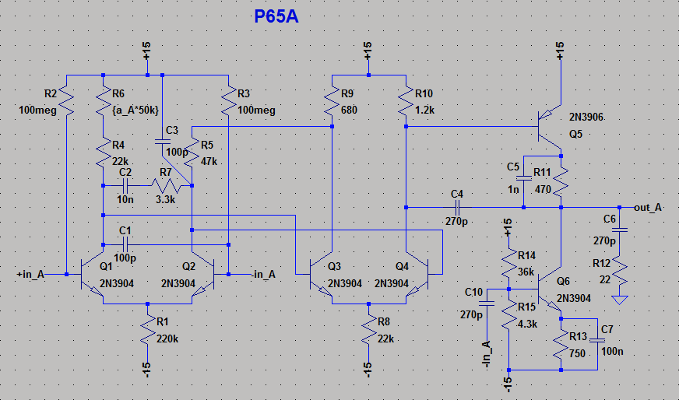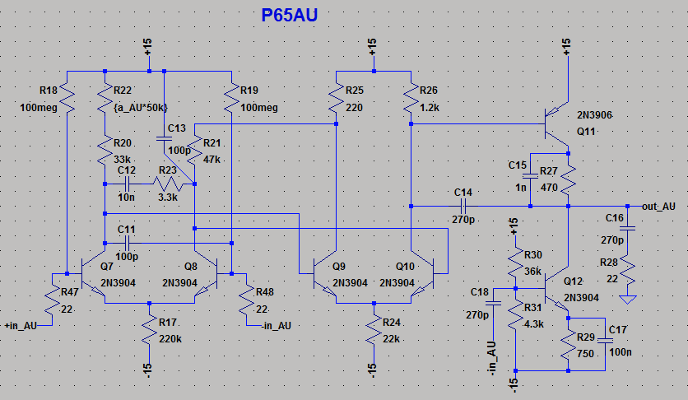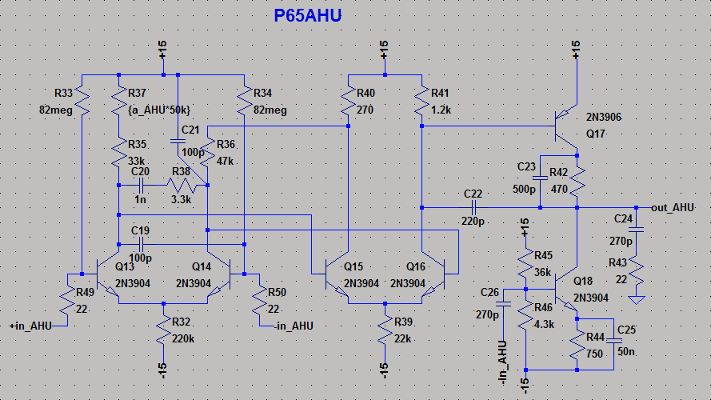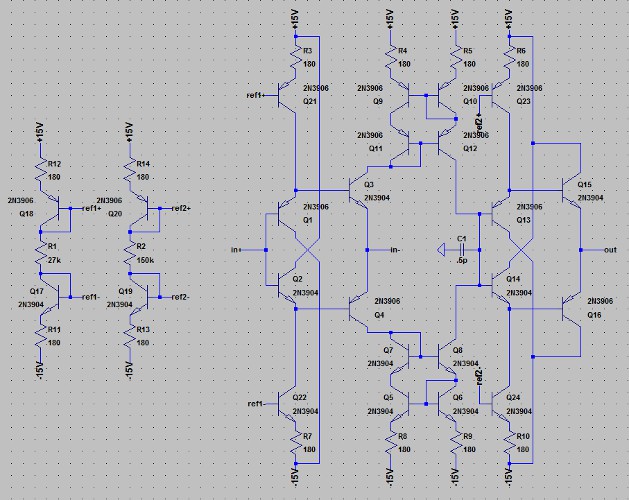A Brief Intro
An analog computer is a simulation of a system where physical parameters are represented by another. In an electronic analog computer, the common representation is by a voltage which can be meausred while the system runs. They were used when they could simulate a complex system more efficiently and faster than their digital counterparts but eventually faded out in the 80s as digital computers continued to develop. These days, analog computers are sometimes used for teaching continuous time controls concepts and in some research applications like simulating neurons.
An old Philbrick Researches RP saved from the dumpster.
Above is an old analog computer I found in a dumpster at MIT one day. It didn't come with the transconductor amplifier modules so making my own might be a fun future project. Adding a way to set an integrator's initial states would also increase the overall useability of the unit.
...
P65A

P65AU

P65AHU

P85AU

...
Intro
I first heard of analog multipliers in the context of analog computers but because of their high cost, an analog computer project was a low priority. One day I was disassembling some equipment and found a couple analog multipliers (AD534). I figured it'd be fun to solve the Lorenz system of equations since they're relatively simple and I had experimented with them before.
The following ODEs form the Lorenz system:
\[\begin{cases} \dot{x} = \sigma(y-x) \\ \dot{y} = x(\rho - z) - y \\ \dot{z} = xy - \beta z \end{cases}\]
This is a discrete time approximation of the system.
A lorenz attractor in browser
Design and Construction
Many special purpose analog computers that solve the Lorenz system use this design.
"Build a Lorenz Attractor" by Paul Horowitz
Paul's approach to scaling the equations and the circuit implemention is relatively easy to understand. The design I referenced seemed interesting though a bit more complicated. The page seems to be down so here's an archived link.
A Simple Circuit Implementation of a Chaotic Lorenz System by Ned J. Corron
Built around 2/23/14
An analog computer that solves the lorenz differential equations.
The output seen from the x-z plane and y-z plane.
...
One of the labs was to design a wideband amplifier meeting the following specifications.
Midband voltage gain: |
A ≥ 200 |
Upper -3dB freq: |
fh ≥ 3 MHz |
Lower -3dB freq: |
fl ≤ 100 kHz |
Source resistance: |
RS = 1 kΩ |
Output capacitive loading: |
CL = 10 pF |
Output voltage swing: |
SO > 1 Vpp |
Power consumption: |
P ≤ 40 mW |
Power supply voltages: |
0V, 5V, ±15 V |
Transistors (no more than 6): |
2N3904, 2N3906 |

The impact of construction menthods (left) on wideband amplifier response (right) swept from 1kHz to 10MHz with a 5mV input. 10/30/12
The following is a discrete transimpedance amplifier.

Discrete transimpedance amplifier. 12/10/12
...